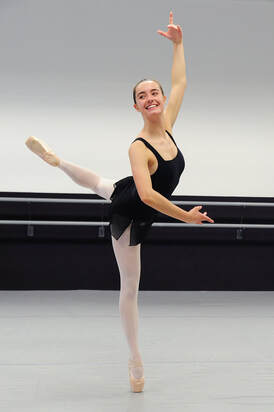 As parents, we have a lot of responsibilities to juggle. We are raising our children to become healthy, happy, and responsible adults. In order to achieve this, we need to teach them important values, such as honesty, hard work, and kindness. One of the most important values that we can teach our children is the value of following through on a commitment. What does it mean to follow through on a commitment? It means that we make a promise or a decision and then we do everything in our power to keep that promise or decision. This may sound like a simple concept, but it's not always easy to do. But, when children learn how to follow through on their commitments, they learn how to set goals, prioritize their time, and develop good habits. For example, if your child commits to practicing their piano for 30 minutes every day, it's important for them to follow through on that commitment. This teaches them that they are responsible for their own progress and that success requires consistent effort over time. It also teaches them that they are capable of achieving their goals if they stay focused and committed. Another example is when your child promises to clean their room before going to bed. If they follow through on this commitment, they learn the importance of keeping their word and taking responsibility for their actions. This teaches them that their actions have consequences and that they have the power to make positive changes in their lives. It's also important to teach our children how to decide what's important and how to stick with a decision. This means that they need to learn how to prioritize their commitments and make choices that align with their goals and values. For example, if your child has a choice between playing video games or studying for a test, it's important for them to learn how to make the decision that will help them achieve their long-term goals. Responsibility, perseverance, and determination help children develop good habits and achieve their goals. As parents, we need to model this behavior by following through on our own commitments and by teaching our children the importance of making and keeping promises.
0 Comments
Finding the right dance studio for your child can be a daunting task, but with a little bit of research and some important questions to ask, you can ensure that your child is in a safe, nurturing, and positive environment that will help them grow and develop as a dancer.
Here are some things to consider when looking for the best dance studio for your child:
Dancing is an enjoyable and rewarding activity that can be enjoyed at any age. There's a common misconception that dance is only for the young, but this simply isn't true. In fact, starting dance classes later in life can offer a host of benefits that may not be available to those who start at a younger age.
First and foremost, starting dance classes at any age is a fantastic way to stay active and improve overall health. Dancing is a form of exercise that is low-impact and can help increase muscle strength and endurance, improve flexibility and balance, and promote cardiovascular health. Additionally, dance classes can also improve mental health. The movement and music can be an outlet for stress and emotional expression. It also provides a sense of accomplishment and can improve self-confidence. It also provides a positive outlet for socializing, especially for those who may have limited opportunities to meet new people in other settings Another benefit of starting dance classes at any age is the opportunity to learn a new skill and explore a new hobby. Dancing is a diverse and fascinating art form that can be enjoyed in a variety of ways, from learning choreographed routines to improvising to music. Finally, it's never too late to start dancing and be a part of the dance community. Whether you’re a beginner or an experienced dancer, you will be welcomed with open arms and you'll have the opportunity to learn and grow alongside other dancers of all ages. In conclusion, starting dance classes at any age is a fantastic way to stay active, improve overall health, and explore a new hobby. It's never too late to start dancing and be a part of the dance community. So, don't let age hold you back – head to your nearest dance studio or community center and start exploring the joys of dance today! 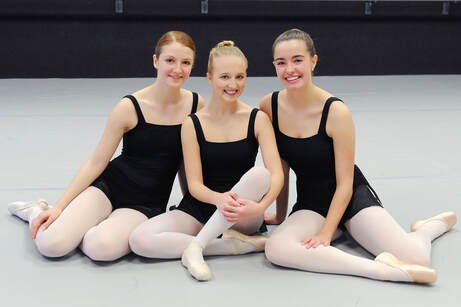 When it comes to kids ballet classes, you have several choices. The same goes with adult ballet classes. There are schools all around the Virginia and Washington DC area to choose from. What sets one Washington DC ballet school apart from a Virginia ballet school? The faculty they have working for them. Here are some important points to consider before signing up for any school that teaches you or your children ballet. Look At the Background of All Virginia School Ballet Teachers. You want to know what school, training and background your Virginia school ballet teachers came from. The origin of ballet may be the same, but the actual classes that taught the faculty are likely different. The same goes for the approach they teach. In order to get the most out of your adult or kids ballet classes, you want to make sure you feel confident in the style the teachers use. Find a Virginia Ballet School with Variety. The goal is to find a Virginia or Washington DC ballet school with options. Perhaps you are not sure whether you will like ballet. Then look for a school that offers several types of dance classes. If you love ballet, but are not sure where to start, consider a ballet school with both ballet class for beginners and separate classes for more advanced students. Do you and your child want to try ballet classes? Then you need to look into a school that offers both kids and adult ballet classes. Some schools even offer baby ballet classes to get kids started as early as possible. (Adaptive Dance here?) The more variety they offer, the better, so long as they have enough faculty to cover the classes they want to teach. Find Virginia School Ballet Teachers You Trust. The most important element when looking into any age range of ballet classes is that you feel comfortable with the faculty. They need to make sure you feel welcome, whether you are signing up for children ballet classes or those for adults. You need to trust they will help you learn in a positive, enriching environment. That is what you get when you turn to the experienced ballet professionals here at the Greater Washington Dance Center. Please, come in and meet us and see for yourself. We would love to help teach you or your child to love the amazing art that is the Virginia ballet. Contact us today! Some of the most influential and well-known dancers were men: Bob Fosse, Fred Astaire, Gene Kelly…the list goes on and on. Despite the common stereotype, dance class is not just for girls! Dance is a physical and athletic activity requiring great skill, strength, and agility. Sounds like an ideal fit for energetic boys! To be a dancer is to be an athlete.
With the popularity of shows such as So You Think You Can Dance and Dancing With The Stars, more boys are taking dance classes than ever before, however the majority of classes still tend to be comprised of primarily females. Boys are instead encouraged to participate in more “masculine” sports as an outlet for their energies. The irony is that dancing is just as physically and mentally demanding as football or soccer…perhaps even more of a challenge! It is incredibly important that we begin to eliminate the perception that dancing is a “girls only” activity. Boys who are kept out of dance class are actually missing out on valuable life skills! Benefits of Dancing for Boys: Dance Training Improves Discipline and Study Habits! Dance class requires students to follow an instructor’s directions and focus on new skills. Boys learn the importance of repetition and practice as they work hard towards meeting goals and successfully completing new steps. The discipline learned in dance classes can also help boys to focus on their academics and build study habits for school. Dancing teaches boys not only how to use their feet, but how to use their brains as well! Dance Training Teaches Respect and Grace! We’ve all heard the saying “boys will be boys,” however dancing is a great way to begin shaping boys into young men. Physically, dance improves posture, teaching boys how to stand up straight and move with masculine grace and sophistication. Socially, dance class shows boys how to respect other people. Following a teacher’s instructions teaches students how to respect authority. Participating in performances and even in class shows boys how to cooperate with others and work as a team! Dance Training Boosts Self Confidence! Dancing is not only fun, but can also cater to the competitive nature that many boys are born with. Boys feel a sense of accomplishment and pride when they master a new routine or skill, and this is a great way to boost self-esteem! Learning how to move to music is very satisfying to a young boy, and provides an outlet for self-expression, leading to an improved sense of self and confidence. Dance Training Improves Athletic Performance! A little known fact is that many NFL players have cross-trained in ballet in order to improve their performance on the football field. Well-known players such as Vance Johnson and Hall-of-Famer Lynn Swann have even credited some of their success to their ballet classes, demonstrating that dance is not for "feminine" boys...it is fit for manly men! Dance improves overall body fitness, including flexibility, agility, muscle tone, balance, and endurance. As an aerobic exercise, dance improves heart health, allowing boys to run, jump and play for extended periods of time without tiring, whether on the dance floor or on a field. As you can see, the benefits of dance for boys extend far beyond the ability to leap or turn. If the young man in your life expresses an interest in dance classes…try it out! Whether your little boy tries out tap, ballet, or hip-hop…he’ll have a blast while picking up a variety of life skills along the way! -BRITTANY WHITE 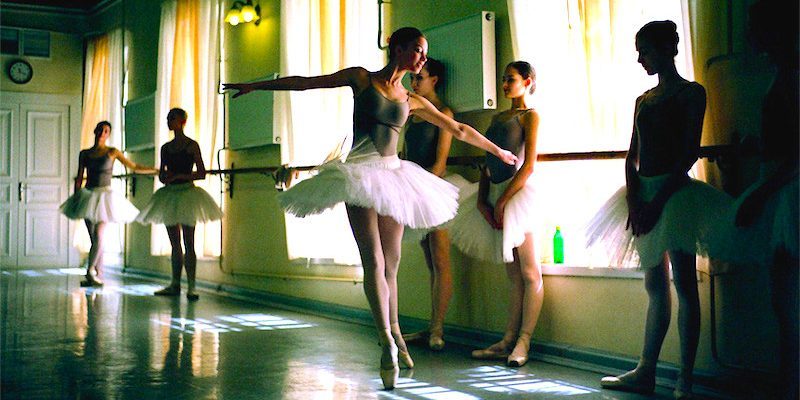 Once you lace up your pointe shoes, there's nothing like the high of becoming one with the music. Everything else in the world fades away when the music begins. Your breathing coincides with each graceful movement, as your feet whisk you away across the dance floor. Like “The Nutcracker,” every dance to a dancer seems like a magical fairytale… and we get to dance it. Croise devant, demi plié and arabesque may seem like foreign terms to outsiders, but to dancers, these moves are within a beautiful language all their own. Dance is not just a hobby or passion… it's a lifestyle. From tiny tutus to the big leagues, we've danced our hearts out on stage in gorgeous leotards and costumes; we've dealt with all sorts of blisters on our feet. The irreplaceable memories that have gotten us to where we are today show that the battle scars are well worth it. Within the elegance of being a dancer, it's also an extreme workout. Any dancer will tell whoever thinks dancing is not a sport that they’re completely wrong and encourage them to try dancing in our shoes for a day. Professional dancer Shanna LaFleur once said: It takes an athlete to dance, but an artist to be a dancer. Dancers grew up with each choreographed number being a magnificent work of art — the stage as their palette and each move, a vibrant color. In addition to harnessing creativity, dance is an outlet to alleviate daily stresses and bring so much happiness to those who embrace it. It's an incredible escape from reality, where you can lose yourself in the movements. There's actually research that proves people who grew up as dancers are less stressed and happier. According to Prevention, Swedish researchers conducted a study involving 112 female teens. Each of the girls was dealing with back and neck pain, anxiety, depression or stress. Half of the studied teenagers were involved in dance classes each week, while the other half of the girls did not attend classes. The results were very positive for the teens who incorporated dancing into their weekly routines. Mental health was improved for these girls, and it was also reported they experienced a mood boost. In a press release, lead study author Anna Dubert stated, “…dance can result in high adherence and a positive experience for the participants.” Prevention goes on to say it's never too late to benefit from dancing, and you don't even have to be a prima ballerina to reap its rewards. Enrolling in ballet, modern or lyrical classes after work/on the weekend is a great way to incorporate dancing into your life. And soon enough, you'll be twirling down the pathway to happiness. Psychology Today says dancing makes you happier than simply hitting up the gym or going for a run. A study conducted at the University of London involved patients dealing with anxiety disorders. They dedicated time to one of the following therapeutic environments: an exercise class, a modern-dance class, a math class or a music class. Out of all the settings, the modern-dance class was the one environment that reduced anxiety a significant amount. Author Vicki Baum once said: There are shortcuts to happiness, and dancing is one of them. Another benefit of dancing frequently is that it stimulates the mind and sharpens cognitive skills at every age. Dancing stimulates different brain activities at the same time, including emotional, rational, kinesthetic and musical. This increases the way your brain functions in a positive way. Imagine that, a fun activity with a wealth of health benefits that keeps us in shape, makes us feel good and makes us smarter! I’m a dancer, and I have done it all: ballet, pointe, tap, jazz, modern, Irish, hip-hop and plain-old rocking it on the dance floor. I have to say, I agree 100 percent with the conducted research. Dancing has all of these benefits and so much more. Happy feet are truly good for the mind, body and soul. - Alexa Mellardo  Hopkins-Greene, here with Glenn Allen Sims in Chroma, uses the fourth wall to help her focus. Photo by Paul Kolnik, courtesy Ailey. Hopkins-Greene, here with Glenn Allen Sims in Chroma, uses the fourth wall to help her focus. Photo by Paul Kolnik, courtesy Ailey. How to become the kind of performer audiences can’t take their eyes off of. After countless hours in rehearsal, the stage can sometimes feel like a foreign country. Mirrors are replaced with blackness, your periphery is filled with light, and the floors, spacing and even the rosin feel different. Suddenly the variation you’d mastered in the studio is shaky and your performance falls short of everything you’d accomplished in rehearsal. Performing is a skill of its own, and great dancers are not always great performers. It takes a particular kind of confidence to share yourself onstage and relax into your body when the pressure is on. But by working on their performance skills, dancers can grow beyond what was possible without an audience. Shake Your Nerves Dancers who flourish under the spotlight typically focus on the work itself rather than outcomes like audience reactions, reviews or possible promotions. Because such results are beyond your control, fixating on them can zap your confidence and exacerbate nerves, explains Dr. Jim Taylor, psychologist and co-author of Dance Psychology for Artistic and Performance Excellence. When those thoughts take over, Alvin Ailey American Dance Theater’s Demetia Hopkins-Greene practices deep breathing to calm down and slow her heart rate. “I focus on my goal for that performance: What’s my role? What am I trying to convey?” she says. She forces herself to stay in the moment and shifts her mind-set to revel in the blackness of the fourth wall, rather than worrying about all the people on the other side. Other dancers learn to use their nerves to their advantage: If you can channel that adrenaline into controlled energy (while staying present), it can give you an extra boost. “Enjoy the butterflies,” suggests Houston Ballet II ballet master and coach Claudio Muñoz. “It’s the best part of the performance.” Discover Your Ideal Prep Whether you always listen to a certain song backstage or a put on a “lucky” pair of mukluks, there may be more power in your backstage routines than you think. “Great performers and athletes are meticulous in their preparation,” Taylor says. That means your makeup, hair and warm-up are all thoughtfully done on a schedule that makes you comfortable. “Consistency of preparation leads to consistency of performance,” he says. Hopkins-Greene, here with Glenn Allen Sims in Chroma, uses the fourth wall to help her focus. Photo by Paul Kolnik, courtesy Ailey. The trick is finding what makes you feel comfortable enough to open up and be vulnerable onstage. Dancers with an internal-focus style often need space and quiet to get into that zone—you’ll find them off in a corner with earbuds in, avoiding eye contact. But others, says Taylor, will begin to stress and self-criticize if they overthink things, so they might need to spend their prep time blasting silly pop music and laughing with friends. Either way, get into performance mode from the moment you start warming up. “Don’t wait until you’re onstage,” says musical theater choreographer and performer Al Blackstone. “Immediately during pliés, be as present as possible, actually look at your hand, engage with the space around you, project energy. Then you won’t have to make a huge shift once it’s time to perform.” Positive imagery should also be part of every dancer’s backstage prep. Studies have shown that visualization can have a real effect on how our muscles behave. Imagining your ideal performance can help embed it in your muscle memory before you go on. “I’ll visualize doing the steps successfully rather than focusing on the time that I fell out of the pirouette,” says Pacific Northwest Ballet principal Lesley Rausch. During the rehearsal period, go through your choreography mentally at least three times per week so that visualization feels natural come opening night. Watch Your Body Language The way you hold your posture can affect how an audience perceives you on a subliminal level, says Jennie Morton, an osteopath and former dancer. For example, by curling your stomach inward while pushing your chin up in a slumping position, you are communicating that you are afraid, whether intentionally or not. Similarly, elevated shoulders or tension in the neck and arms can denote a lack of confidence. “The audience will be waiting for something to go wrong because they don’t feel comfortable watching you,” says Morton. “For an audience to connect to a performer emotionally, trust has to be established.” Of course, these postures can be a choreographic or dramatic choice. But otherwise, Morton suggests aiming for neutral alignment—particularly focusing on your pelvic position—to give your body language greater authority. Find Your Way Into the Role When Hopkins-Greene was cast in the title role of Matthew Rushing’s Odetta last year, she was intimidated to depict the iconic singer known as the voice of the civil rights movement. But once she found herself in the role, she shined. “I can’t be Odetta,” she says, “but I can tell you what I feel from Odetta. I can show you how I see this woman.” Claudia Muñoz coaches dancers to approach performances the same as rehearsals. Photo by Cameron Durham, courtesy Houston Ballet Academy. Blackstone says that performers who struggle with being expressive onstage can improve by digging even deeper into the material. “Talk to the choreographer, ask yourself questions about the character and how you want the audience to feel,” he suggests. “Performance is about communication—how can you have a great conversation if you don’t know what it is you’re trying to say?” Based on your interpretation, discover places in the choreography to play with your energy and focus, and find those moments when you can feed off other performers onstage by making eye contact. “Take those moments when you’re not engaging straight out to the audience to look down or over your shoulder or at your partner,” says Blackstone. Not only will this give your dancing more nuance, but it will leave you more energy to give to the audience when you are sending it out in their direction. Don’t Aim For Perfection Because the stakes are high in performance, dancers tend to put more pressure on themselves. “When I was younger I felt this sense of needing to be perfect technically in my performance,” says Rausch. She’s not alone. But this approach can backfire, aggravating stage fright and leaving dancers unprepared to bounce back from the inevitably imperfect moments in a performance. When coaching dancers for competition, Muñoz tells them to approach it just like they do every day in the studio. “If they’re good, they’re going to win anyway.” A performance is not the time to try for an extra rotation in your turns; simply execute what you know you can do and remain open to what comes onstage. Strive for excellence rather than perfection, advises Taylor. “Excellence still sets the bar incredibly high, but it takes away the pressure of having to be perfect.” Be Human So what is that sparkle? The je ne sais quoi that makes certain dancers seem magical onstage? Simply put, it’s you. “The dancers that I enjoy watching the most are the ones who are very comfortable with who they are outside of the studio because they allow themselves to be that person onstage, too,” says Rausch. Watch other dancers to see what it is about their performances that you respond to. And replay videos of yourself performing to see how you’re coming across, whether you look comfortable in your own skin. “With performers, their whole identity can be wrapped up with their label as a dancer,” says Morton. “It’s those who manage to retain their humanity, that connection with the self, that find it more natural to be expressive.” Make time for activities and friends that help you stay in touch with all the quirks and oddities that make you uniquely you. And once you’re in front of the footlights, don’t hold anything back. Kathleen McGuire is a contributing writer to Dance Magazine. In the following video trailer for Nelson George’s documentary A Ballerina’s Tale, Misty Copeland—who in June became the first black principal dancer for the American Ballet Theater—talks about the familiar feeling of isolation in an arts industry not always known for its inclusion. |
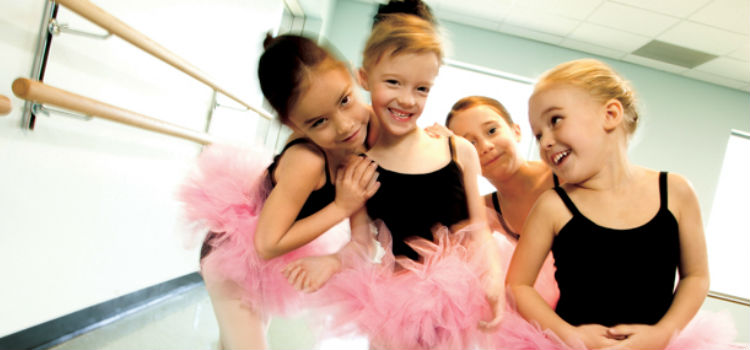
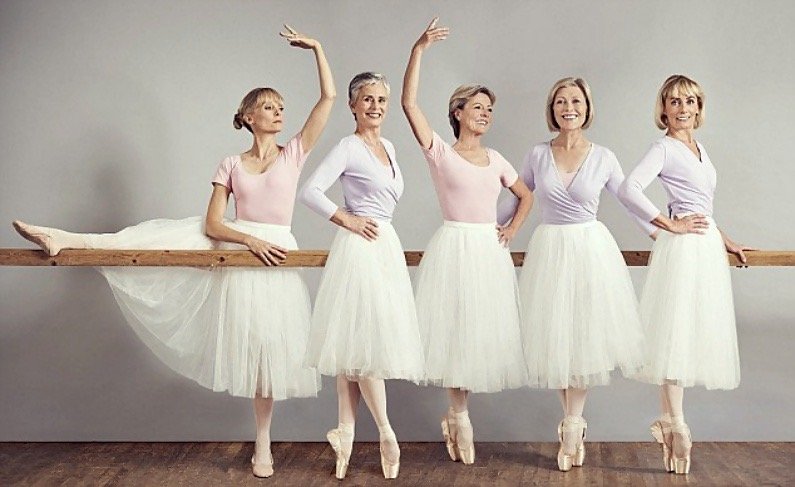
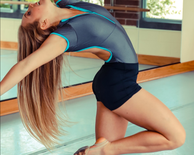
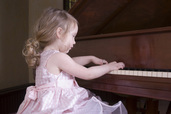
 RSS Feed
RSS Feed